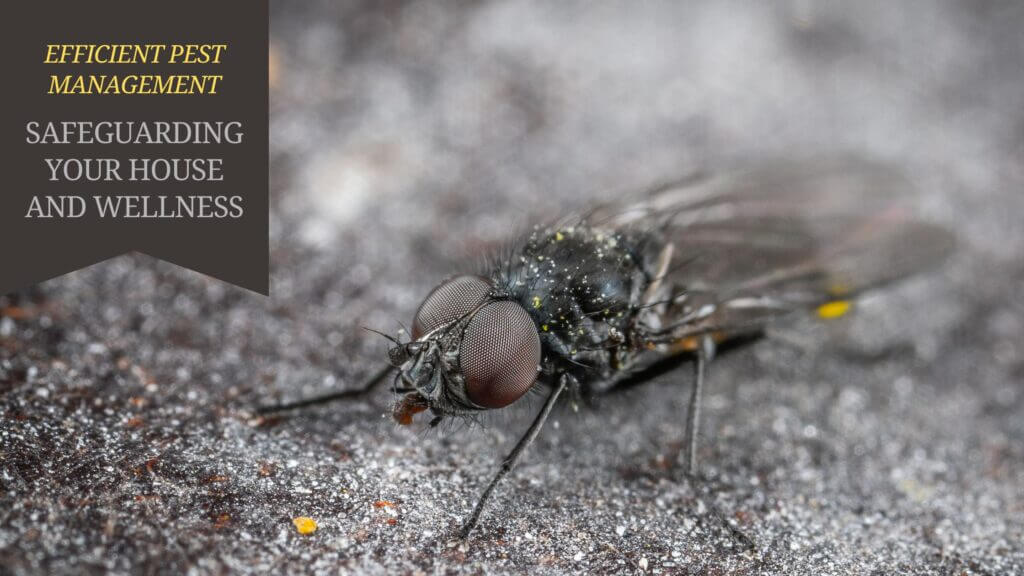Pest management is a crucial aspect of maintaining health, hygiene, and the integrity of agricultural, industrial, and residential spaces. The need for efficient pest management has grown due to the increasing resistance of pests to conventional pesticides, as well as the environmental and health concerns associated with chemical solutions. Efficient pest management focuses on integrating various methods to control pests while minimizing harm to the environment, non-target species, and human health.
In this article, we will explore the essential strategies for efficient pest management, how they work together, and the benefits they provide.
Understanding Pest Management
Pest management is the process of controlling and preventing pest populations, such as insects, rodents, and weeds, from causing damage to human health, property, or agricultural productivity. Efficient pest management goes beyond simply eradicating pests; it involves implementing sustainable, long-term solutions that address the root causes of pest issues. It emphasizes prevention, monitoring, and the strategic use of both chemical and non-chemical methods to achieve lasting control.
Integrated Pest Management (IPM)
At the heart of modern efficient pest management is Integrated Pest Management (IPM). IPM is an eco-friendly approach that combines multiple control techniques to keep pest populations at manageable levels. Rather than relying solely on pesticides, IPM incorporates biological, cultural, physical, and chemical methods, as well as preventive practices, to achieve effective pest control. The key steps in IPM are:
- Prevention: The first line of defense is prevention. This involves eliminating the conditions that attract pests in the first place. For example, sealing entry points in buildings, keeping food sources in sealed containers, and removing standing water can prevent pests from entering or infesting indoor environments.
- Monitoring: Regular inspection of the area helps track pest populations and their activity. This can include setting traps, using sensors, and conducting visual checks. Monitoring helps to determine the best time to intervene, ensuring pest control methods are employed only when necessary.
- Identification: Properly identifying the pest is essential to determining the most effective control method. For example, a rodent infestation requires different treatment strategies than a bedbug problem.
- Control Methods: Once pests are identified, the IPM plan implements a range of control measures:
- Cultural Controls: Changing farming or home maintenance practices, such as crop rotation or proper waste disposal, to reduce pest access to food and shelter.
- Biological Controls: Using natural predators or parasites to control pest populations. For example, introducing ladybugs to control aphids.
- Physical Controls: Employing barriers like netting or screens to keep pests away from crops or homes.
- Chemical Controls: When necessary, using pesticides as a last resort. In an IPM strategy, pesticides are carefully selected and applied to minimize their impact on the environment and human health.
- Evaluation: After implementing control methods, it’s crucial to assess their effectiveness. Continuous monitoring helps determine if the pest problem is under control and if adjustments need to be made.
Benefits of Efficient Pest Management
- Environmental Protection: By reducing the reliance on chemical pesticides, efficient pest management helps protect the environment, including soil, water, and non-target species. Sustainable practices such as biological controls, crop rotation, and habitat modification can lead to healthier ecosystems.
- Cost-Effectiveness: Efficient pest management is more cost-effective in the long run because it reduces the need for expensive pesticides, minimizes the risk of pest damage, and lowers the costs associated with pest-related property damage and health issues.
- Improved Human Health: Excessive use of chemical pesticides can have adverse effects on human health. By adopting an integrated approach, pest management reduces the likelihood of exposure to harmful chemicals, leading to safer living and working environments.
- Resistance Management: Over-reliance on chemical pesticides can lead to the development of resistance among pest populations, making them harder to control. By integrating different pest control strategies, the spread of resistance is slowed, ensuring that control measures remain effective.
Technological Innovations in Pest Management
Recent technological advancements have further enhanced the efficiency of pest management. These innovations include:
- Precision Agriculture: The use of GPS, drones, and sensors to monitor and treat pest infestations at a localized level, ensuring that resources are applied only where needed.
- Smart Traps and Sensors: Modern traps are equipped with sensors that detect pest activity and can send real-time alerts to pest management professionals. This technology allows for quicker responses and more accurate pest control.
- Biopesticides: The development of natural pest control agents such as bacteria, fungi, and plant extracts has opened new doors for environmentally friendly pest management.
- Genetic Engineering: Advances in genetic engineering are making it possible to develop pest-resistant crops and even genetically modified organisms (GMOs) that can combat pests.
Challenges in Pest Management
While efficient pest management offers numerous advantages, there are still challenges. Some of these include:
- Public Perception: There can be resistance to adopting new pest management methods, especially those involving biological controls or genetically modified organisms.
- Climate Change: Changing environmental conditions can alter pest behavior, distribution, and abundance, making pest management strategies harder to predict and control.
- Regulatory Issues: In some regions, restrictions on pesticide use or regulations surrounding the introduction of biological agents may complicate pest management efforts.
Takeaway
Keeping your home safe and pest-free requires investing in expert pest control services. Pest control experts combine expert guidance, modern solutions, and preventive measures to ensure that your house stays safe and free from pest threats. Don’t let pests take over your home!
Contact Top Line Pest Control today for expert pest control services and to reclaim your peace of mind. Now, you need not worry about pests as you have the best pest control service provider.
